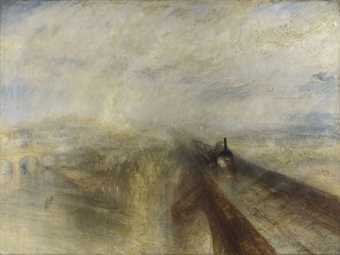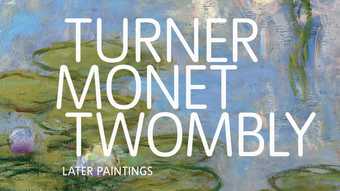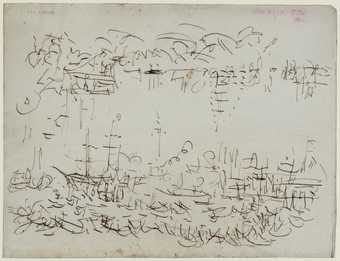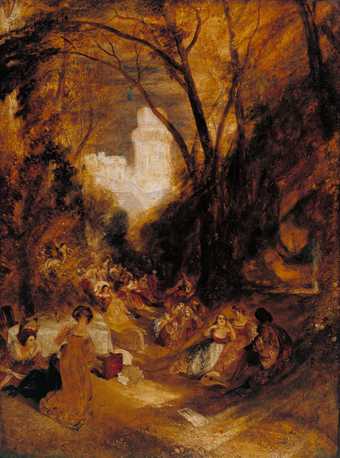
Joseph Mallord William Turner
Fire at the Grand Storehouse of the Tower of London (1841)
Tate
At around 6 pm on 16 October 1834, the Houses of Parliament caught fire. As the blaze spread rapidly through the Lords and the Commons, thousands of spectators gathered to witness the destruction of these politically and historically symbolic buildings. J.M.W. Turner was one of a number of artists in the crowd that night, and as the fire burned, so too did his imagination.
Turner was skilled at visualising epic events and had already demonstrated the vulnerability of man’s imperial ambition in paintings such as Snow Storm: Hannibal and his Army Crossing the Alps 1812 and Caligula’s Palace and Bridge 1831. But the burning of the Houses of Parliament was a momentous occasion in British history, occurring at a time when the parliamentary system itself was under pressure to evolve and meet the demands of modern society, as signified by the passing of the Great Reform Act of 1832. The fire’s symbolic potential, combined with the visual ingredients of light, darkness, vibrant colour and architecture, made it a truly irresistible subject for Turner.
The work he produced in response demonstrates his sustained engagement with this subject and tracks his creative process, from pencil sketches made at the scene to oil paintings produced in the studio and intended for public exhibition. The excitement of Turner’s reaction to the spectacle, however, is best seen in his vibrant watercolour sketches.
The Burning of the Houses of Parliament, from the River belongs to a series of nine rapidly executed watercolour studies that were originally bound within a sketchbook, but were separated for display in the early twentieth century. Much debate has centred around their production. Were they worked up on the spot from different viewpoints on the Thames? Or do they represent Turner revisiting the scene in his imagination back in his studio?
Regardless, their raw energy and masterly technique is clear. They record the artist revelling in the pictorial possibilities of the fire, trying to capture its colour and movement as it engulfed the building. In The Burning of the Houses of Parliament, from the River embers are swept upwards into the air, while the contrast of black building and luminous fire is reflected in the river below.
Turner took a different approach in another watercolour: The Burning of the Houses of Parliament, from Old Palace Yard, with Westminster Abbey. Although he left it unfinished, it offers a more close-up account, showing the architectural details of the Gothic chapel that housed the Commons, the density of the awestruck crowd and the efforts of firefighters to combat the blaze. And his powerful depiction of the fire’s physicality: its heat, its crackling and roaring sound and the smell of smoke are almost tangible.
These watercolours plot different points in Turner’s fascination with the fire, showing his versatile and masterful manipulation of the artform in the process. His alternate perspectives – proximity and distance – combine to offer both an eye-witness account of an historic event and the chance to muse on the sublime qualities of a devastating spectacle.





